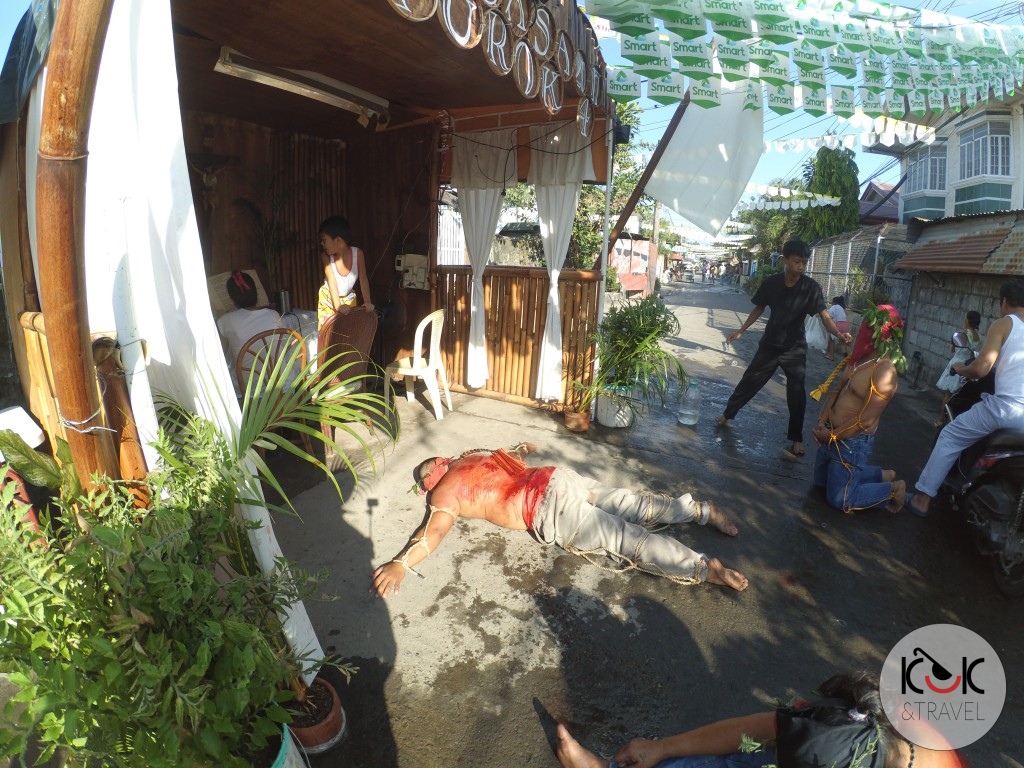
It could seem to any of us that Easter should be celebrated by Catholics in the same way anywhere in the world. Well, it’s definitely not. You do not have to search far to spot some differences. Go to Spain to see at least one of the Holy Week’s processions and you will experience a completely different Easter atmosphere. We did this 2 years ago, but this year we wanted to spend Easter in the Philippines, where you can observe local people during specific celebrations performed on a large scale too. On Good Friday Catholics anywhere in the world commemorate the death of Jesus Christ – that’s the fact. In Poland we have the Liturgy of Word and then – adoration of the cross, whereas in the Philippines (especially in Luzón Island) many men participate in a procession/parade, during which they whip themselves and stop along the way visiting chapels one by one until finally they fall to the ground at the last one with their arms stretched out and whole body forming the cross; then after 1pm a crowd of people is waiting for the performance of the scene of the Passion of Christ (an actor playing a role of Jesus and the other two convicts are literally nailed to the cross, and after the “event” they are taken to hospital). So in a nutshell, this is what we saw in Angeles City, where we decided to stay for 2 nights. Initially, we had wanted to go to San Fernando, where in the nearby Cutud there is a big ”spectacle” taking place including scenes of whipping and crucifixion every year, but we finally chose Angeles to experience it more locally. You’ve probably heard lots of stories about people coming to the event groaning and yowling during the crucifixion performance which is described as the most profound experience for them during Easter time (BTW forbidden by the Catholic Church). We have a slightly different impression from the mentioned performance in Angeles. Sharing our experience with you here below.
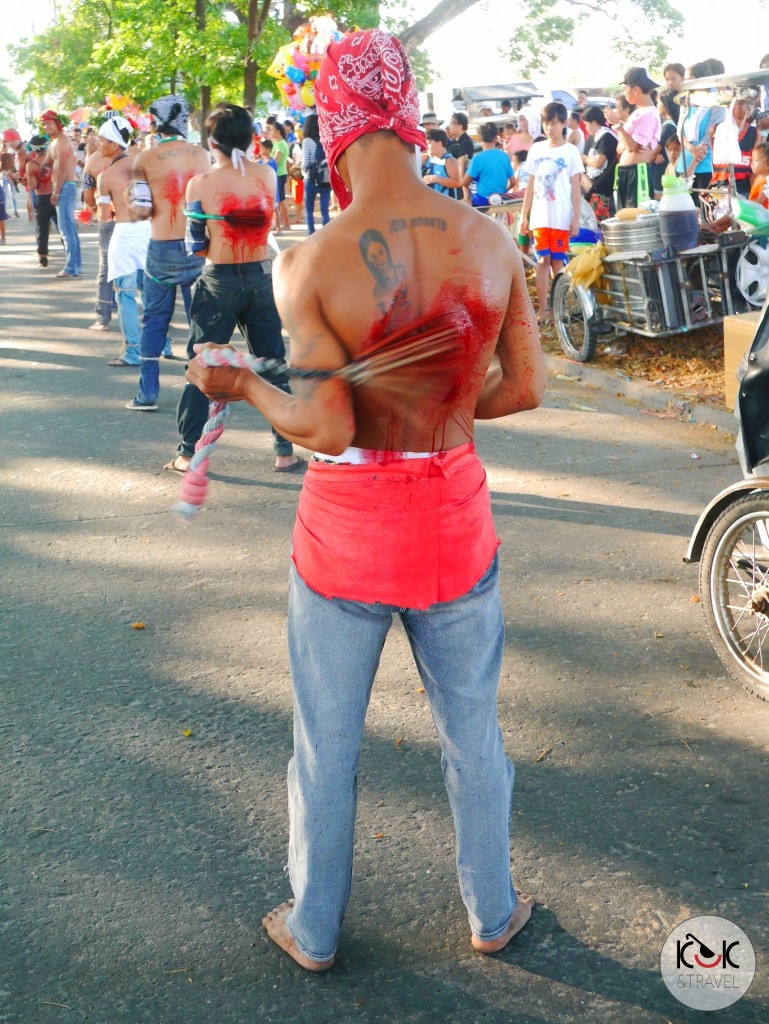
In Angeles we were told that on Good Friday we should head to Pampang Road early in the morning to observe local traditions and customs characteristic for that day. We set off there around 7 o’clock. The Pampang Road on the left and right side was filled with stalls with food, drinks, alcohol, balloons, mascots, live fish in water bags and colourful chicks placed in tight cages:
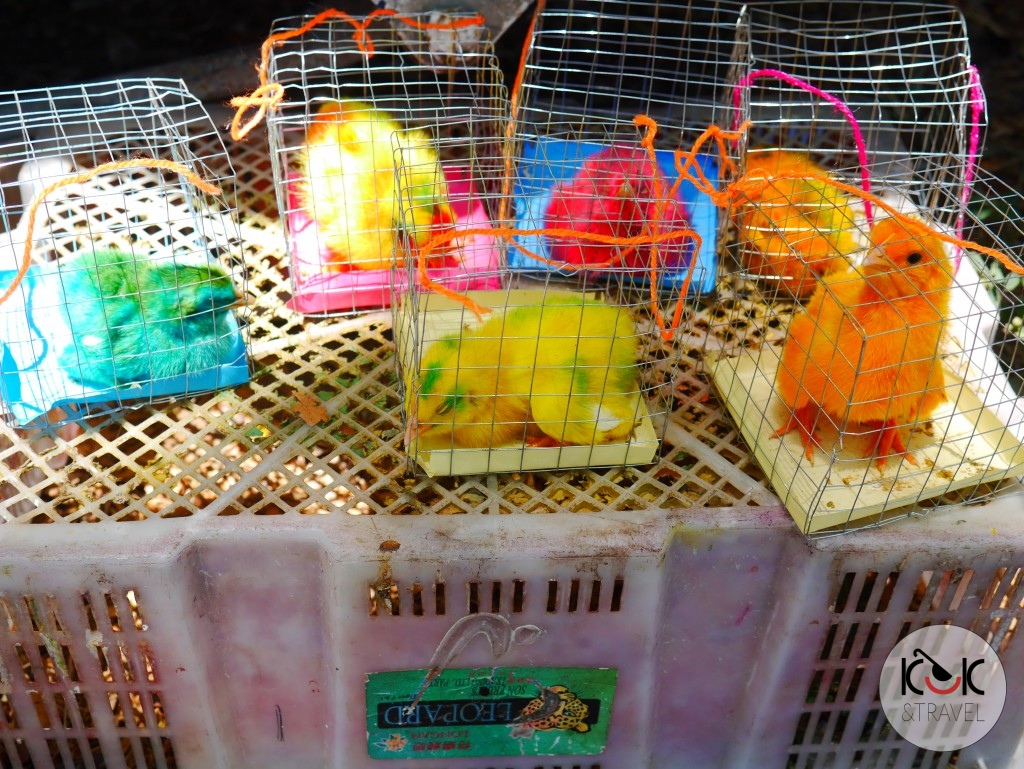
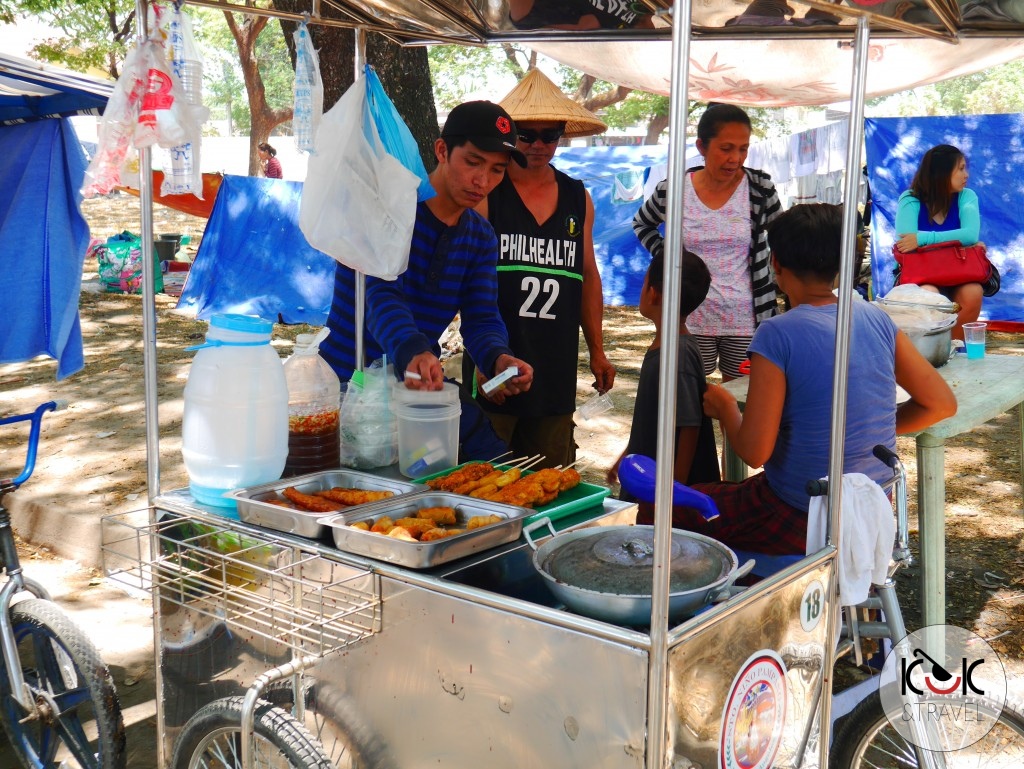
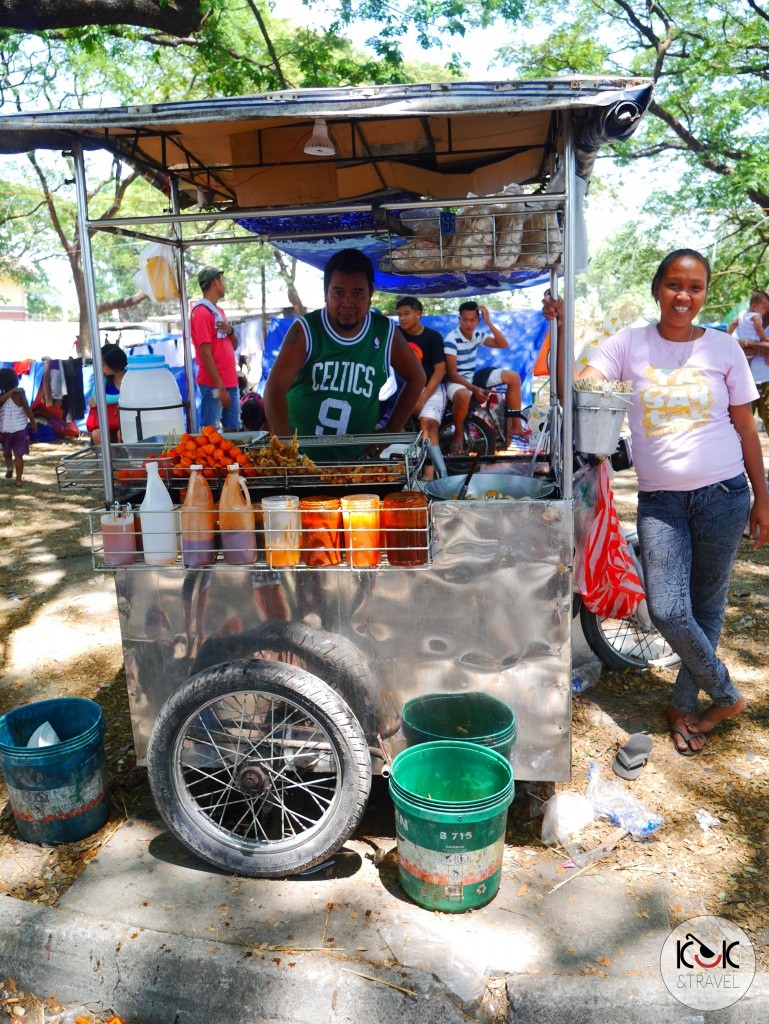
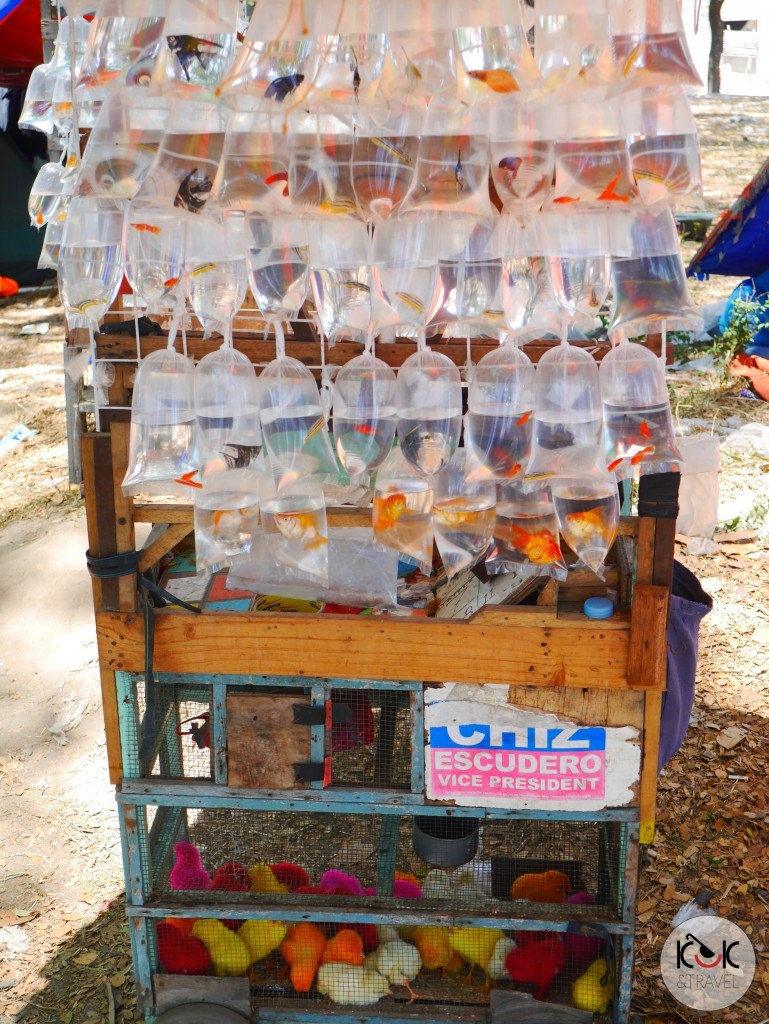
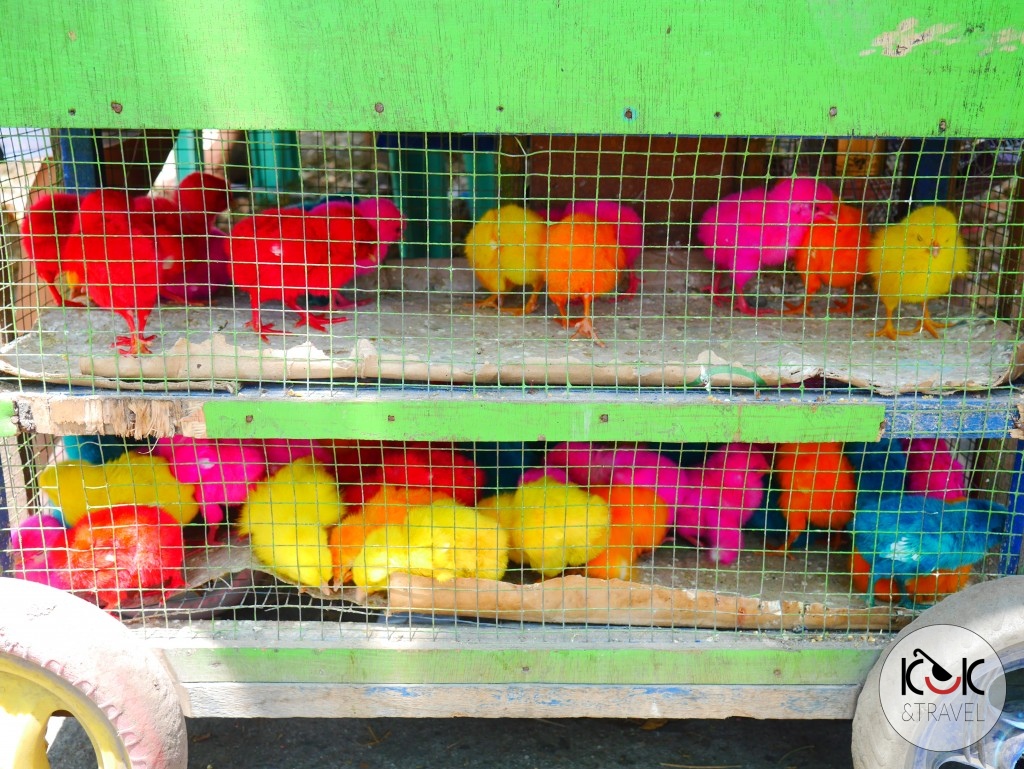
Walking down the street, in a field on the right side we saw about 10 men whipping themselves with whips ending with wooden pegs. The skin on their backs was already slightly reddened from self-beating.
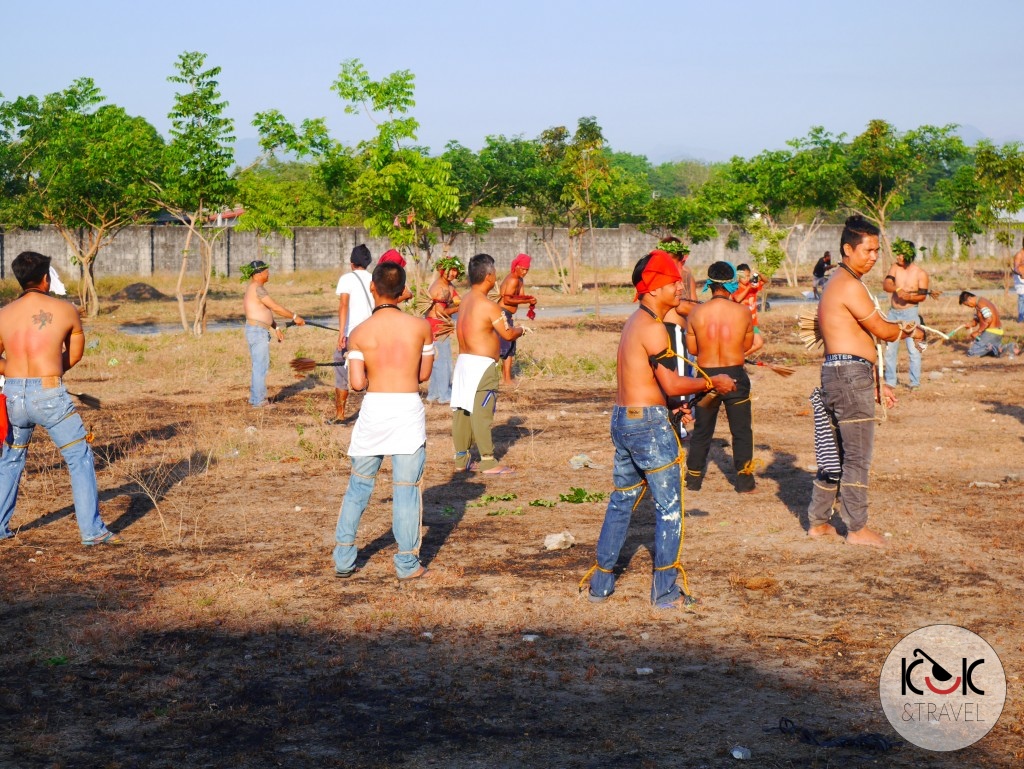
After a while the swollen skin was cut in several places with razor blades forming small wounds from which you could see some blood flowing:

Then the whips were dipped in water and used again for self-whipping, which resulted in fresh-blood effect on the self-whippers’ backs. Men appeared in the street standing in a line, wearing face masks, forming a group heading to the first chapel along the way, continuing the self-whipping. The blood gushed and squirted from their backs to up to 3-4 meters, so it was impossible to remain clean watching the entire parade.
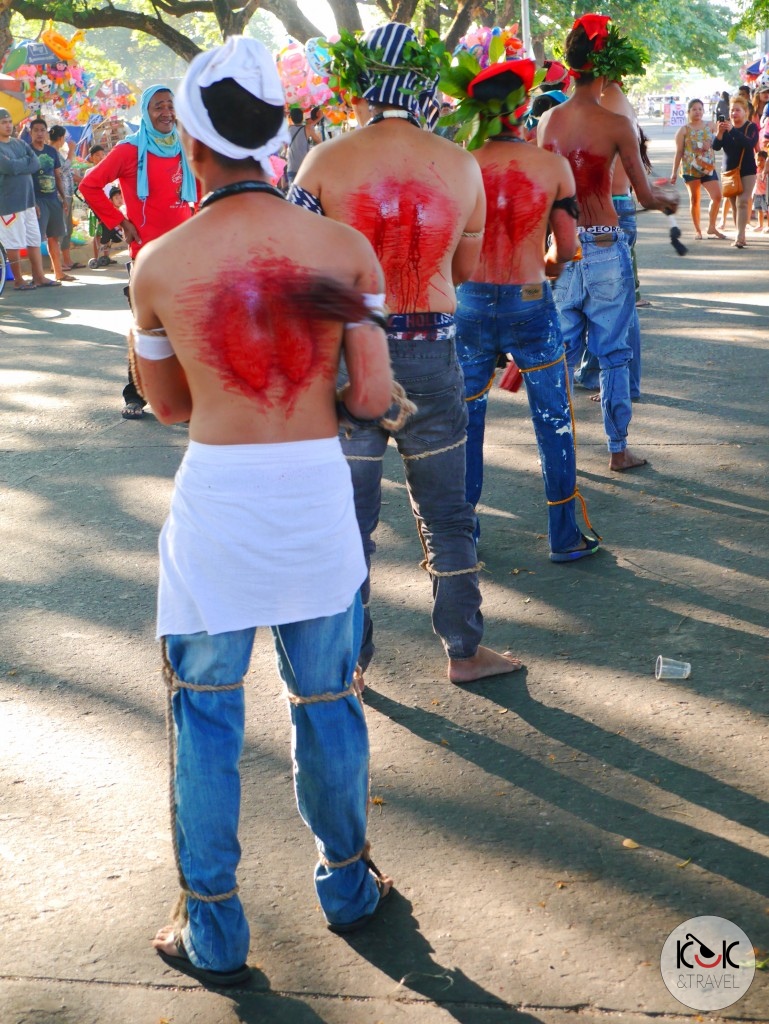


The self-whippers were getting to various chapels on the way until they reached the last one (perhaps the 9th one) at which they fell down lying in front of the altar with their faces touching the ground.
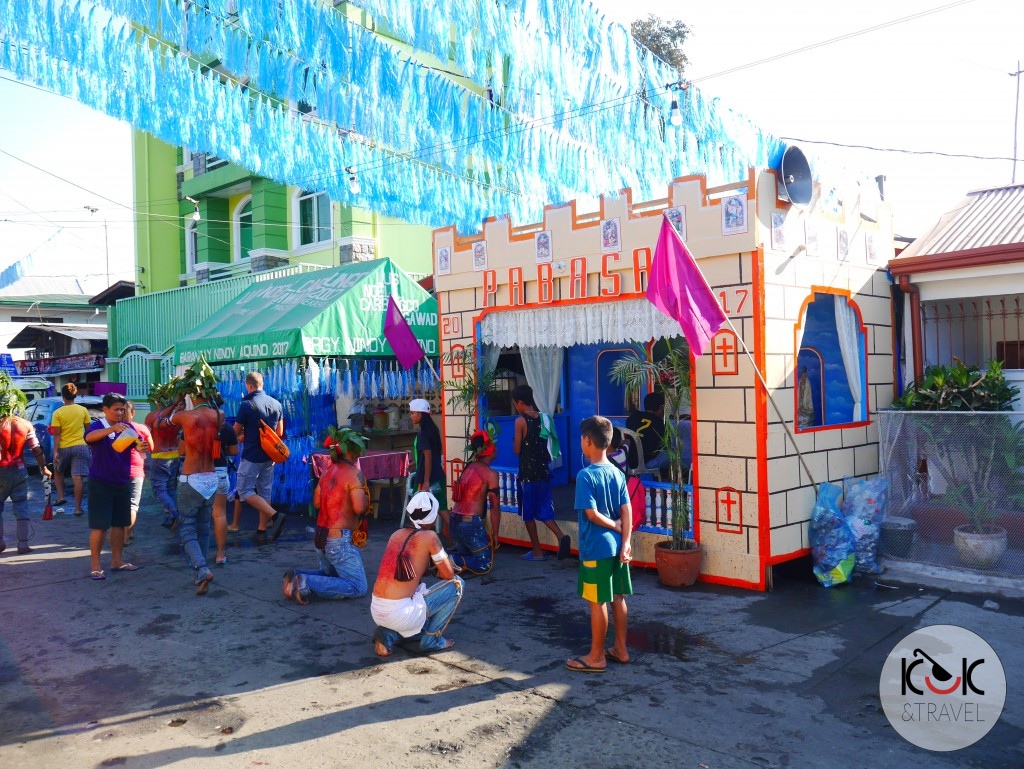
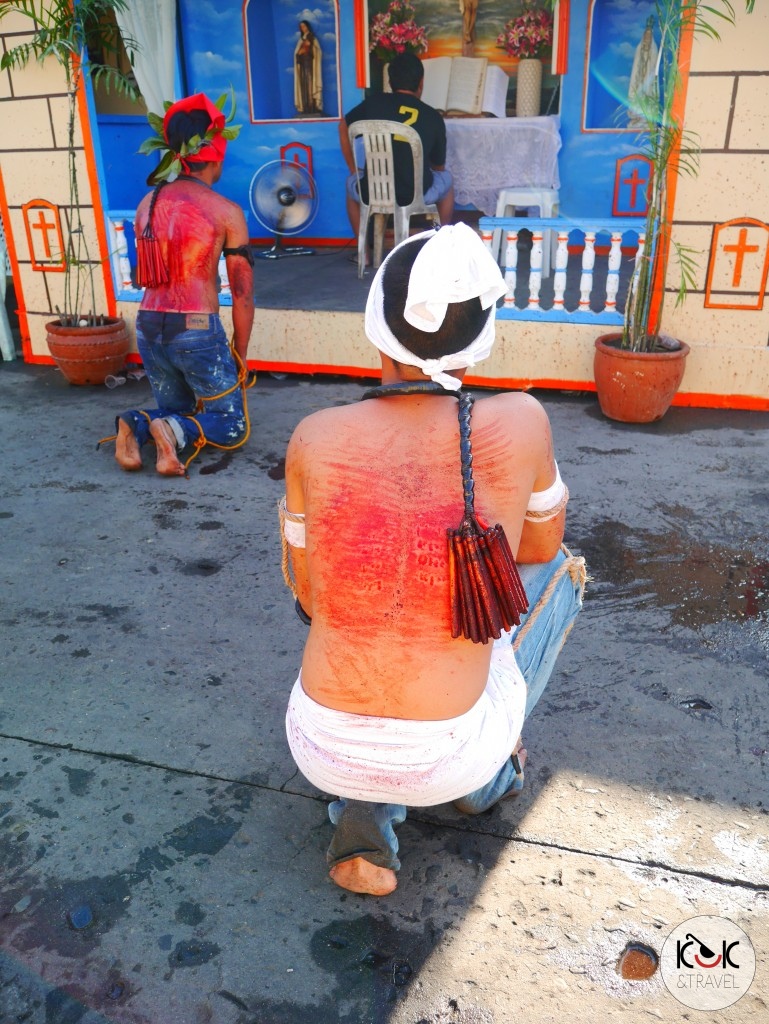
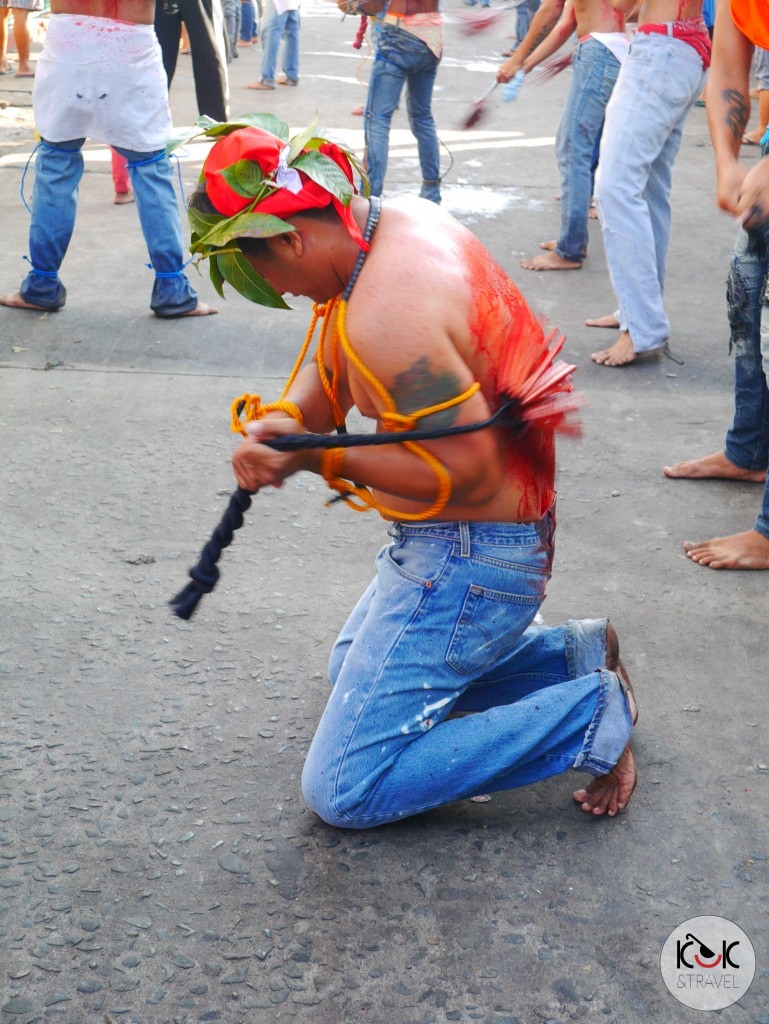

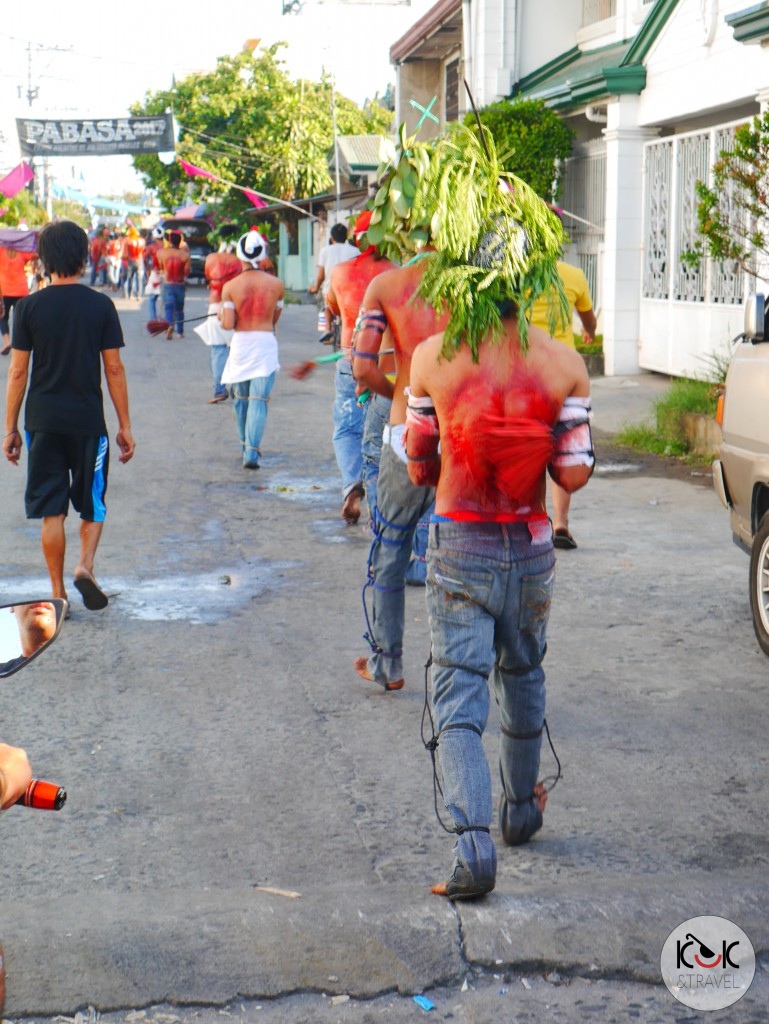
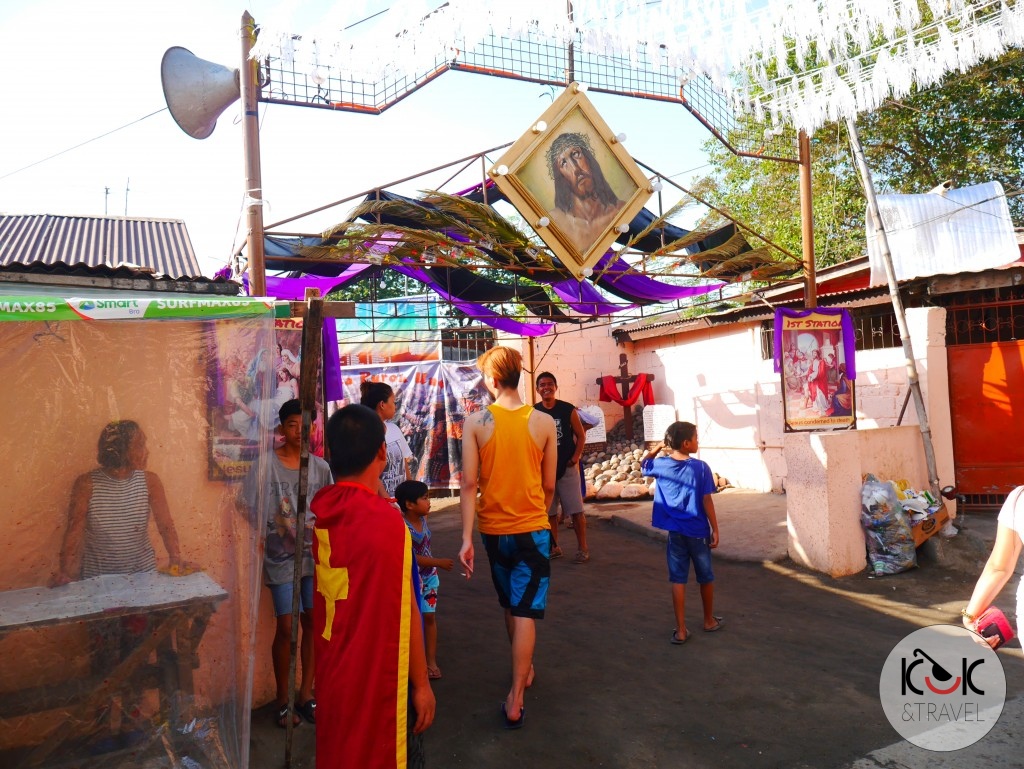


In each chapel there was one woman singing to a soundtrack.


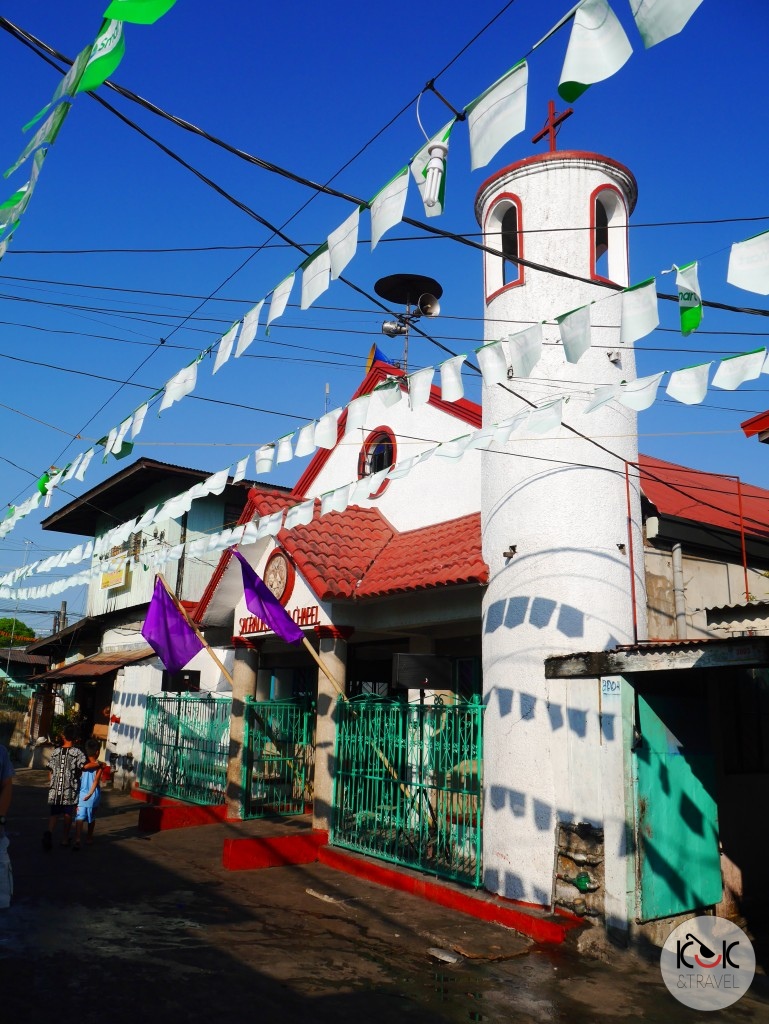
As one group was finishing the parade, another one could be seen in the street in a moment. Parades lasted several hours. Some groups were carrying large crosses:
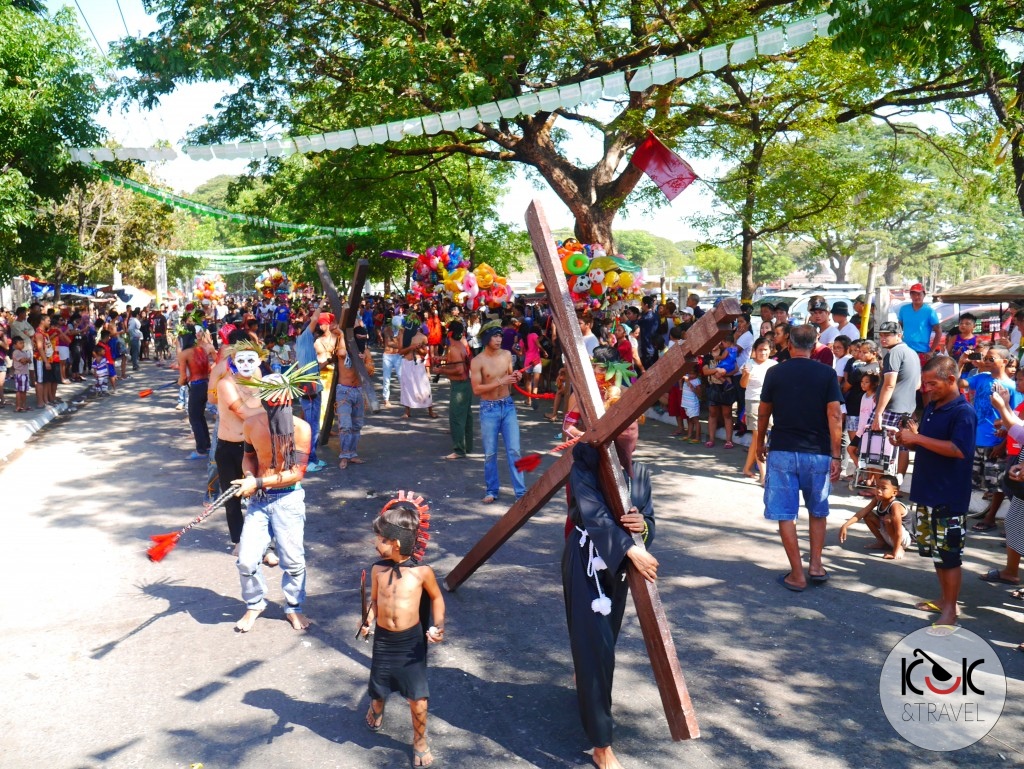

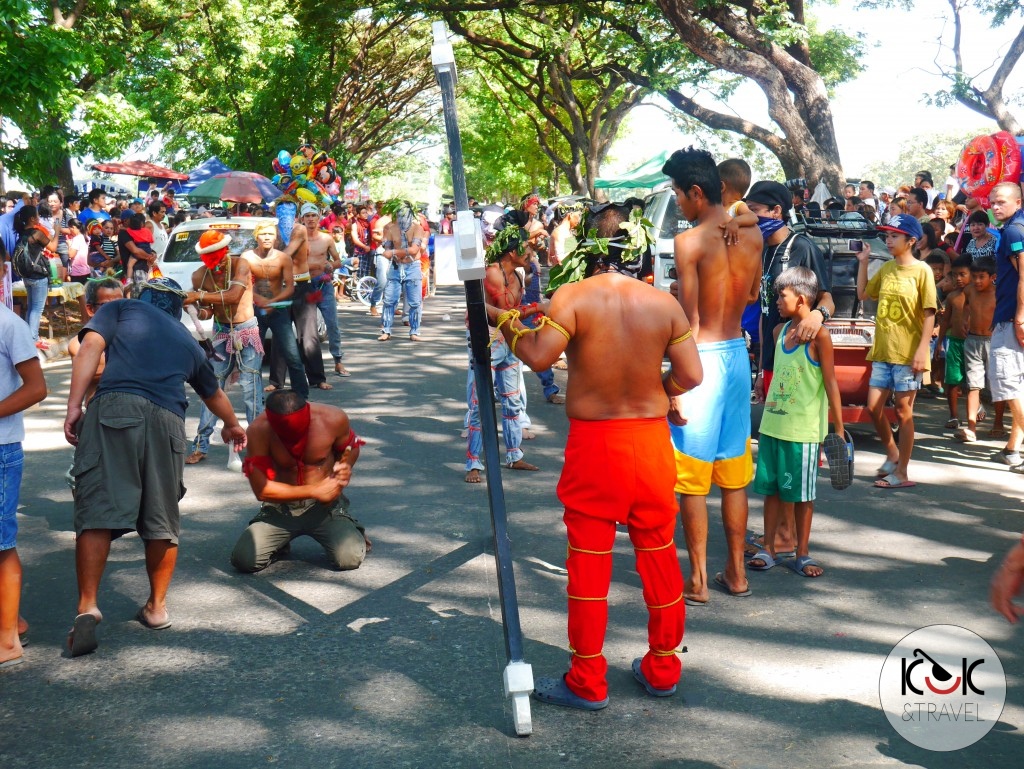
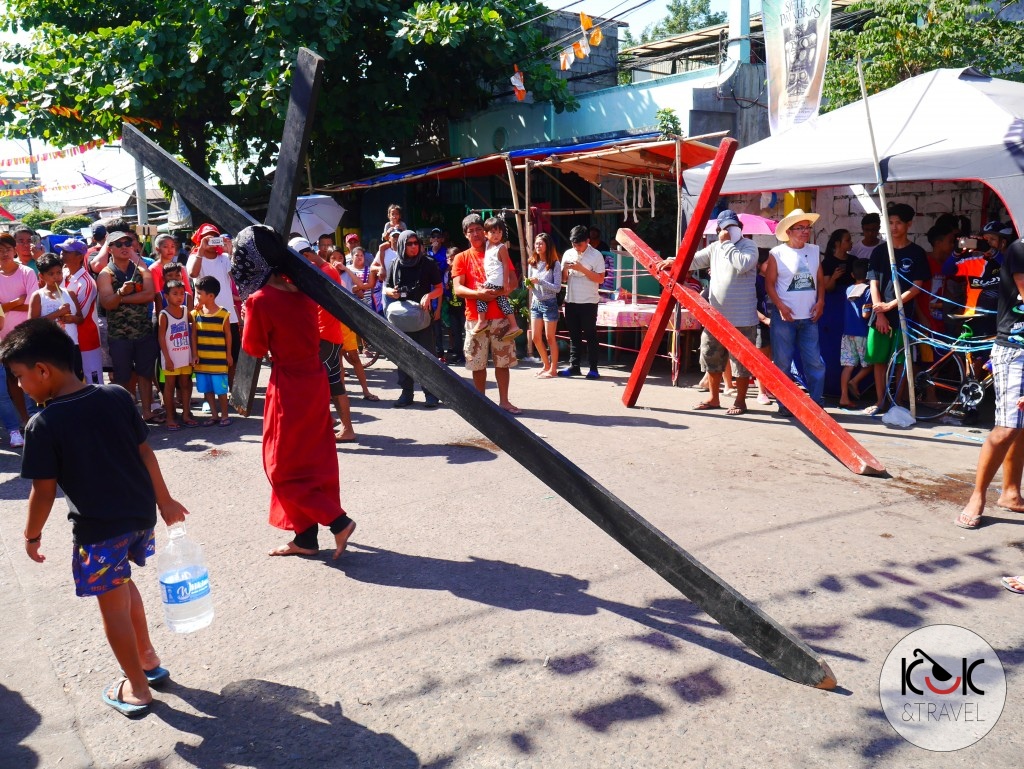
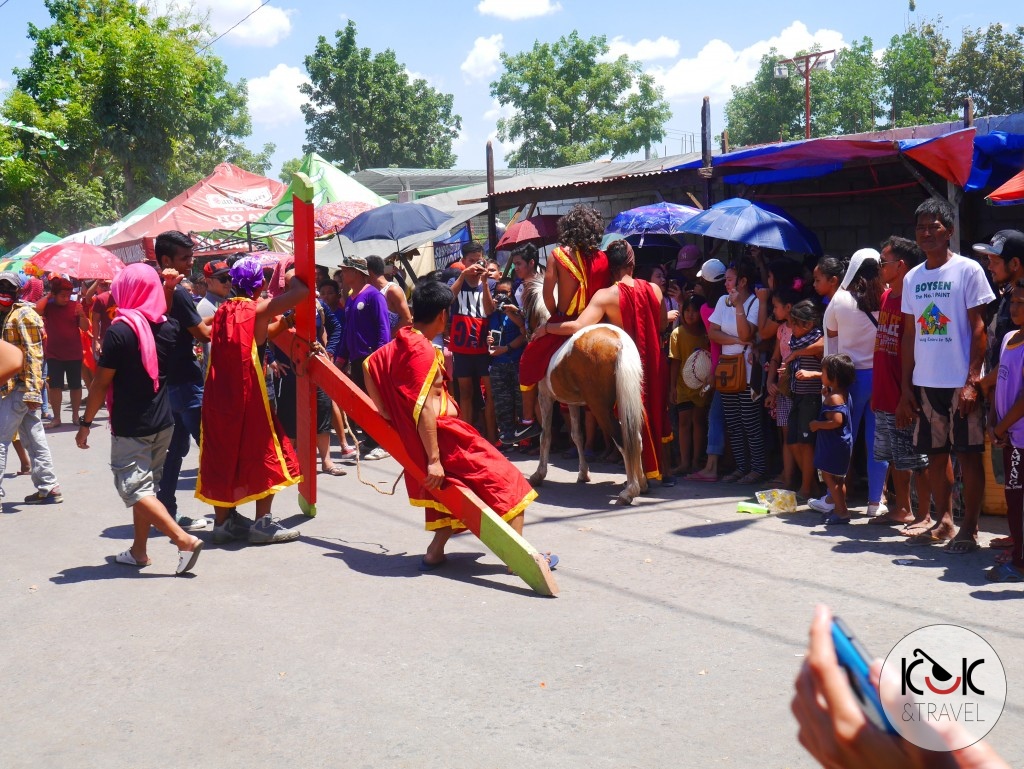

The women on the way provided cold water, juices and eggs to the self-whippers.
From Pampang Road the men turned into a narrow street where you could see people standing in front of their houses or sitting outside at bars (as shown in the picture below). The photo was taken around 9:00 am, and these folks had already finished drinking a crate of Red Horse (local beer) and were consuming a ”tube” of beer.

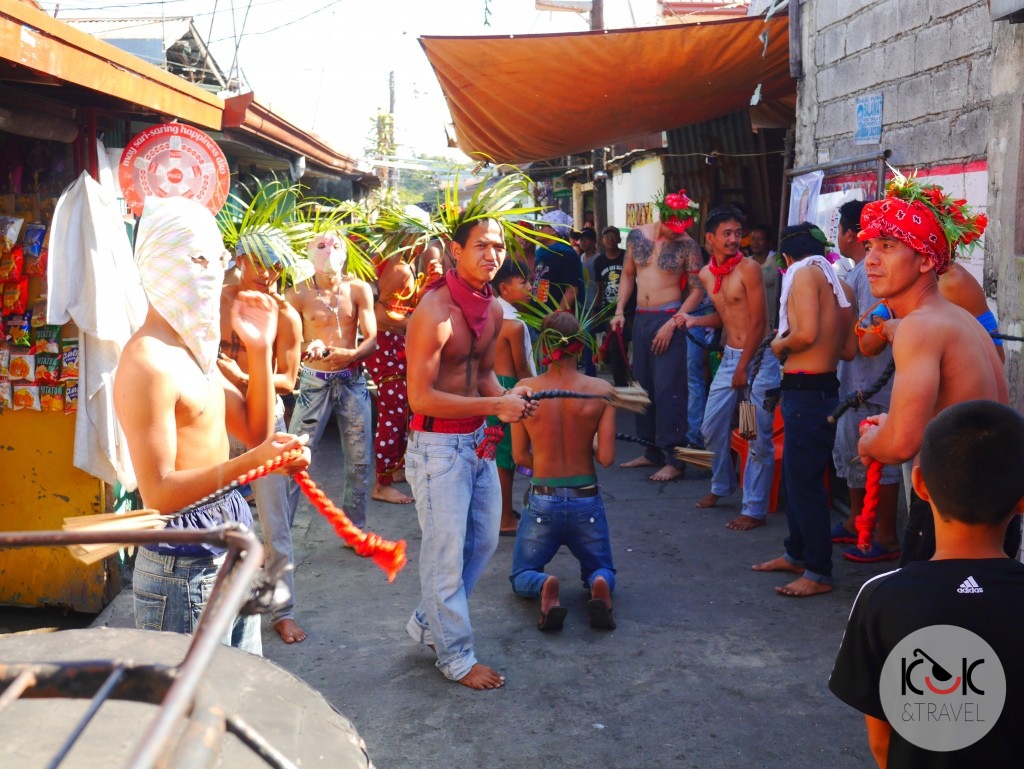
Drinking together they watched self-whippers passing along the way. The self-whippers seemed to pretend they were tough enough not showing any signs of suffering or pain, they smiled, some posed for photos, some did not even want to drink the offered cold water (the temperature was above 40 degrees on that day), and others were smoking a cigarette while having a stop at a chapel. The pace of self-whipping was very fast, the blood was ”spitting” everywhere around and you couldn’t help it and avoid being stained in narrow streets. All passers-by and people standing in front of their houses on a parade route had blood on their clothes.
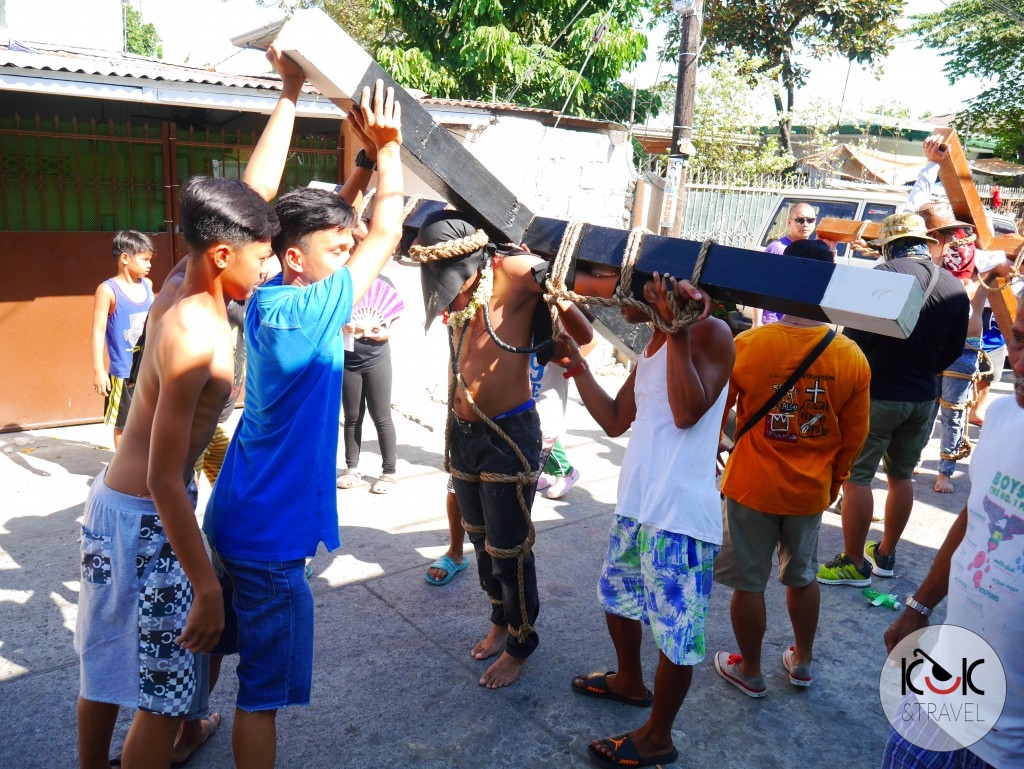
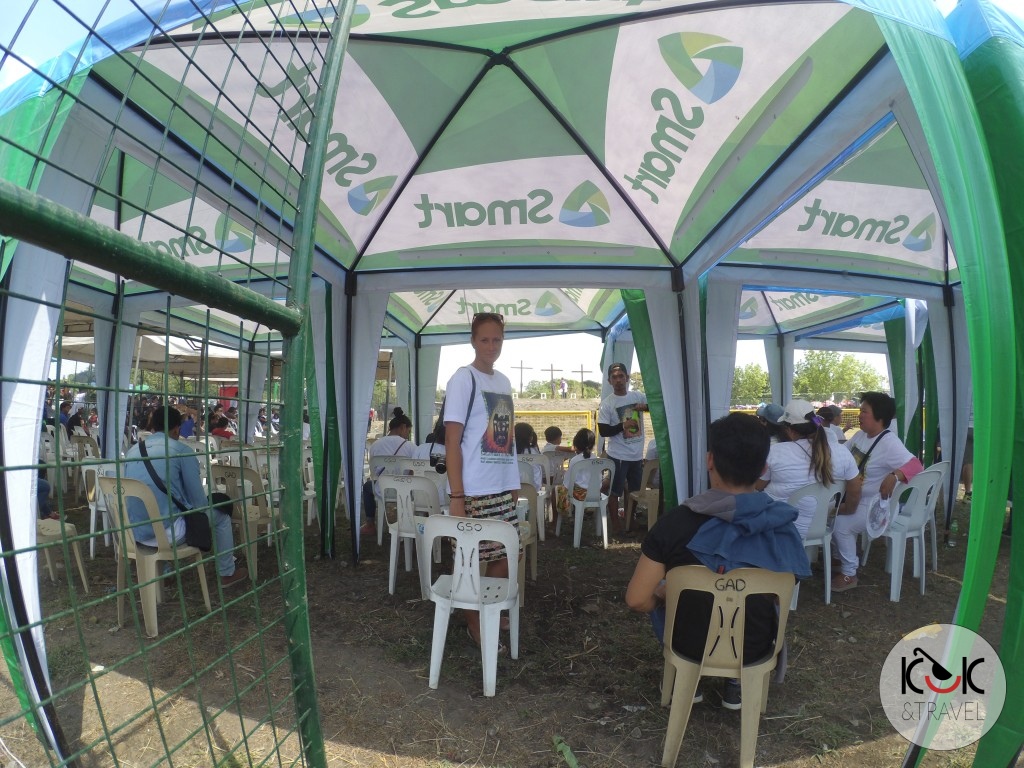
 The Passion of Christ was presented in a different way than we had expected.
The Passion of Christ was presented in a different way than we had expected.

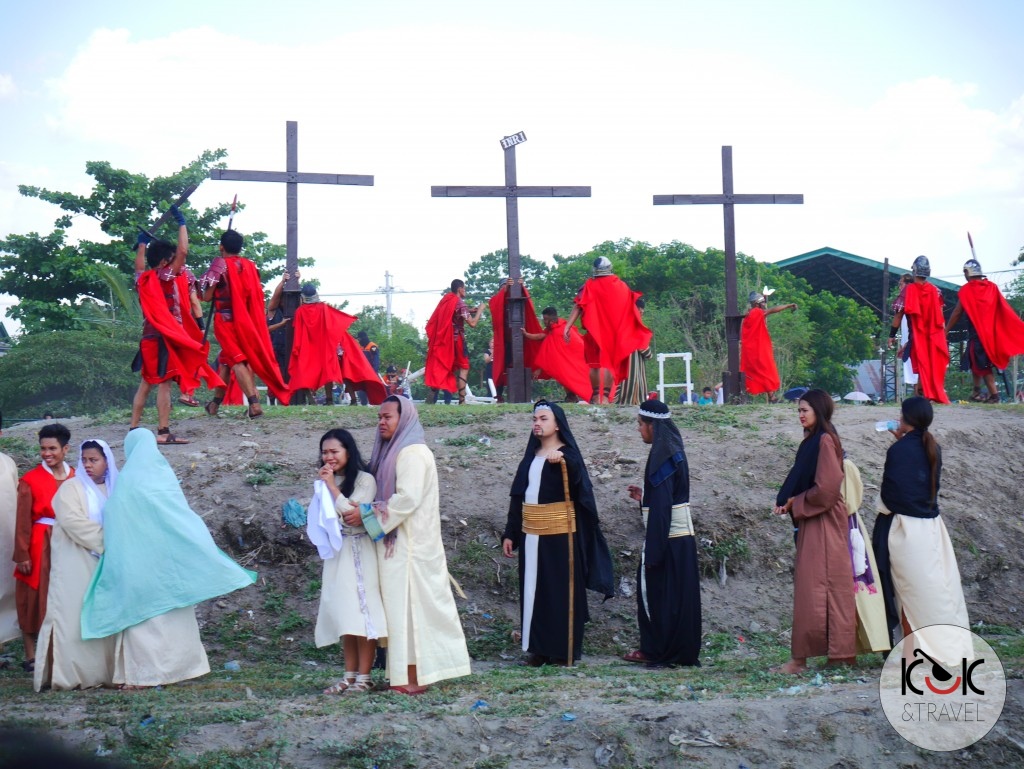

Nudity was not exposed at all during the whole performance; Jesus was dressed in a nude-colour outfit covering all his body.
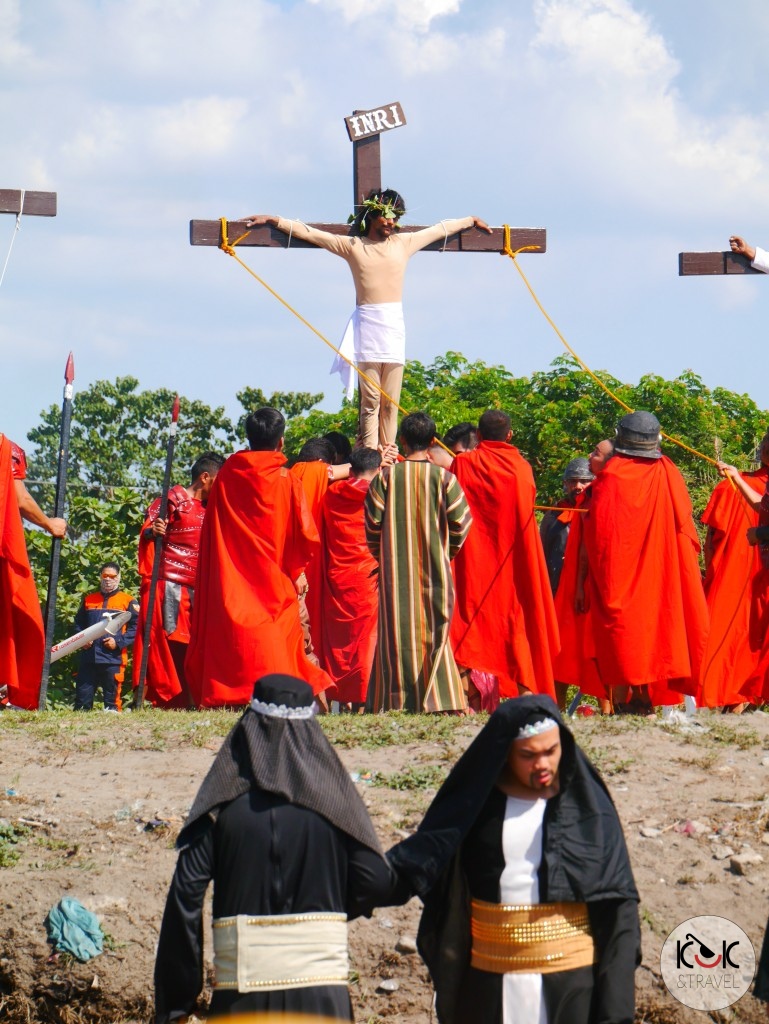
Regarding the actors’ nailing to the cross that was authentic: first they had their palms disinfected, then they had them nailed to the cross, but it wasn’t done on the ground (as we had expected), they had it done vertically while being tied (hanging) to the cross. An actor who handled the nailing procedure stood up on a ladder and using a hammer did his duty. The actors hanging on the cross had in fact a footrest under their feet and initially had their hands tied with ropes to the arms of the cross. There were 3 crosses on the hill. The first two convicts were hanged before Jesus, then the scene of scoffing, taunting and jeering at Jesus began, and then he was to be tied to the cross:


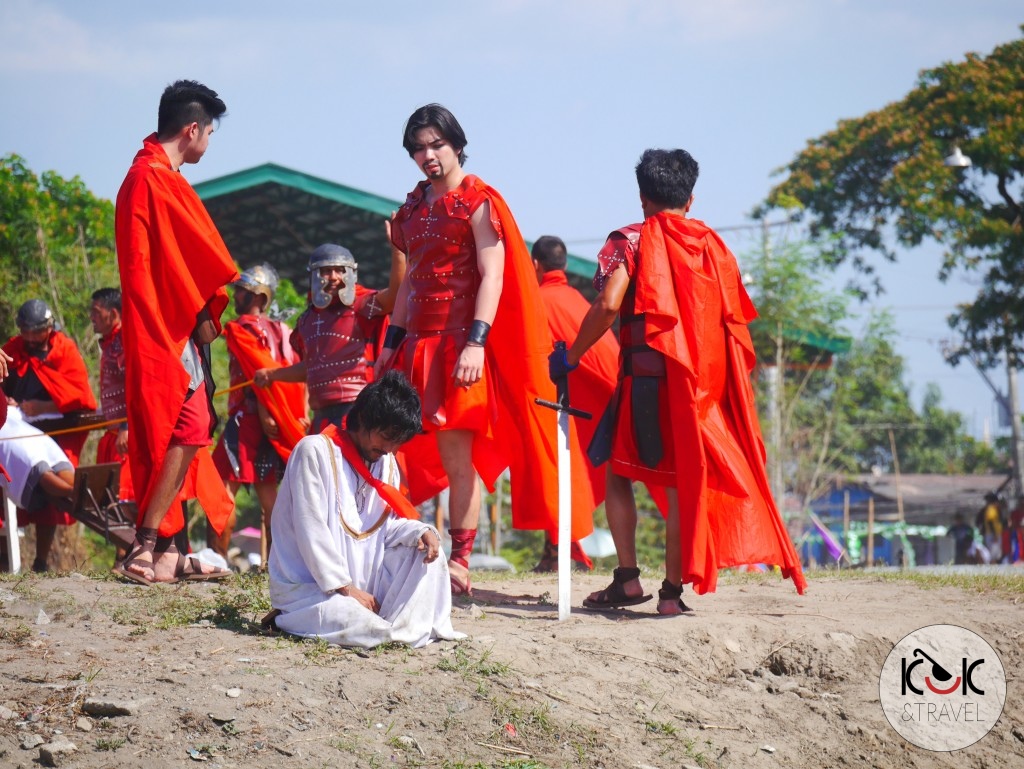



As stated before the three crucified men were genuinely nailed to the cross. After taking the first two off the cross, they were immediately taken to hospital by ambulance. There were many other actors standing at the cross, among others: an actress playing the role of Mother Mary and the Pharisees. At the very end after Jesus’s body was taken off the cross, he was “handed in” to Mother Mary. It was a moment when the blood from the nail wounds was already leaving some stains on the rest of his body and clothes. After a moment ”Jesus” was also transferred to hospital.
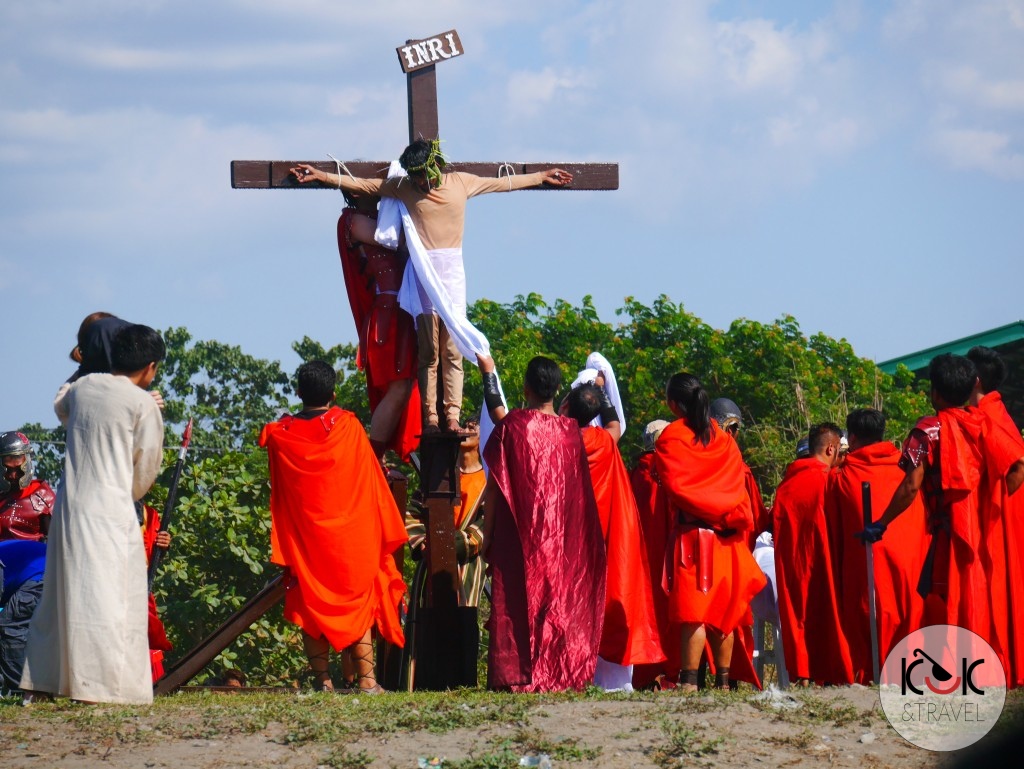




What seemed interesting, the moment of a drastic change in weather and the sky breakdown following Jesus’s death on the cross was demonstrated by releasing water from the fire truck from the area behind the hill with the crosses, accompanied by a good music soundtrack causing fear and anxiety among people standing near the cross, especially the Pharisees.

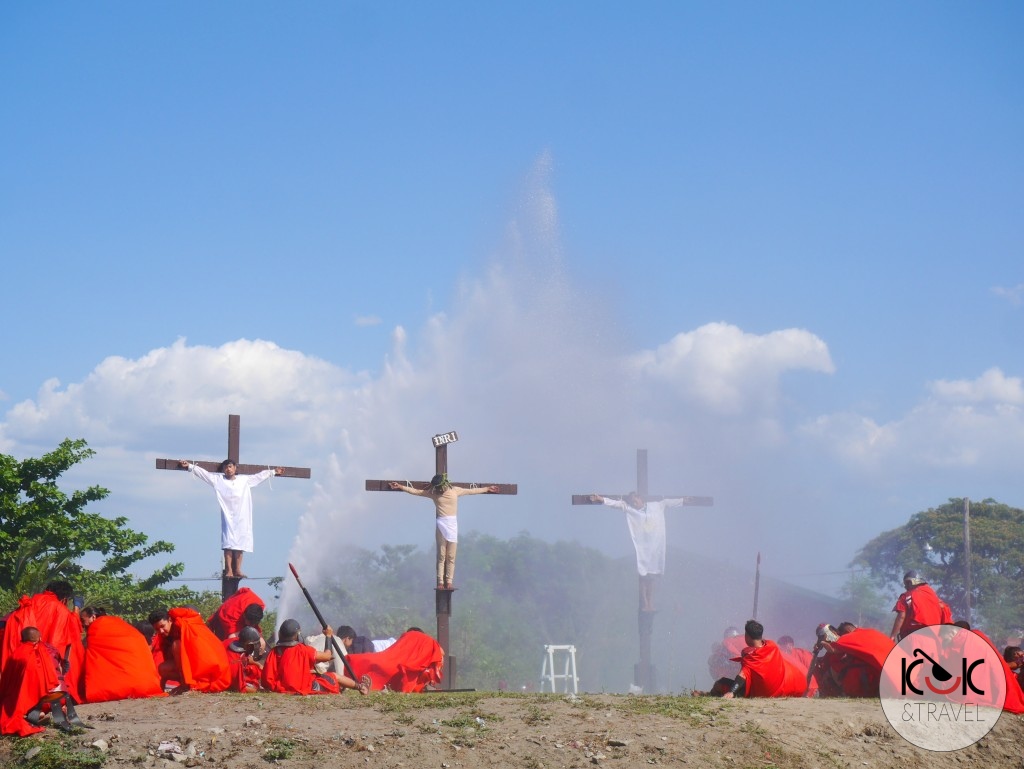
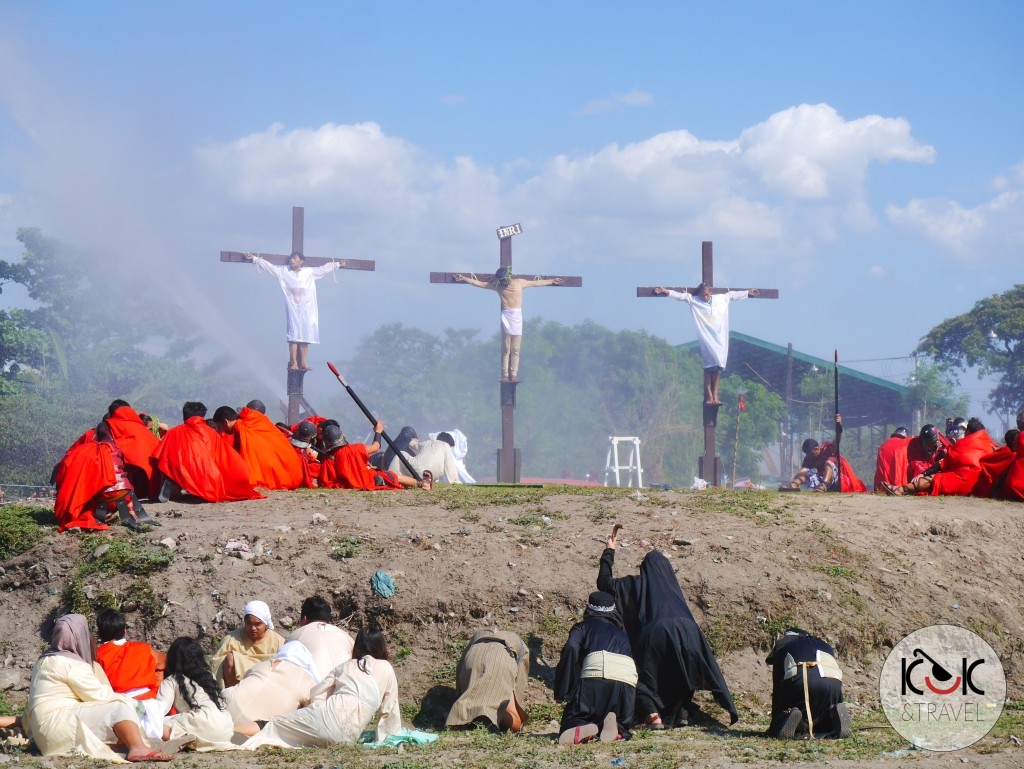
Of course, throughout the whole show, which lasted about 30 minutes, an amazing background music was being played, at times including elements of horror and pompous tone. The costumes of the actors embellished the spectacle. Unfortunately… in general the reactions of people who came to see the crucifixion performance left much to be desired. Taking into account the fact that the Filipinos are considered one of the most religious Catholic nations in the world, we were extremely surprised that many spectators roared with satisfaction and clapped their hands at the moment when ”Jesus” was being tied to the cross! The reverse reaction, and therefore the jowling and growning sound, could be heard at the moment when his hands were being nailed to the cross, as though the people suddenly realized it had to cause a lot of suffering to the actor.

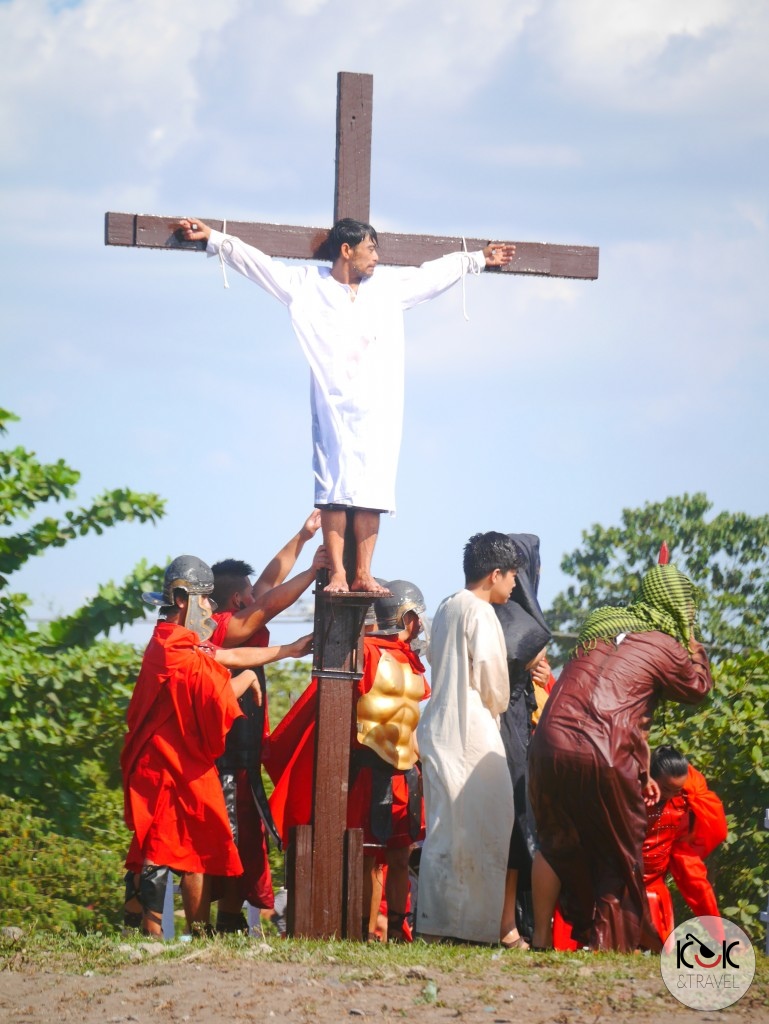
Although such practices have been officially banned by the Catholic Church, Filipinos continue to follow their tradition every year. We talked to one of the priests in Angeles who gave us detailed instructions on how to get to the ‘crucifixion parade’ and didn’t even mention that it was inappropriate to go there, instead mentioned it as a kind of religious tradition worth experiencing in the Philippines.


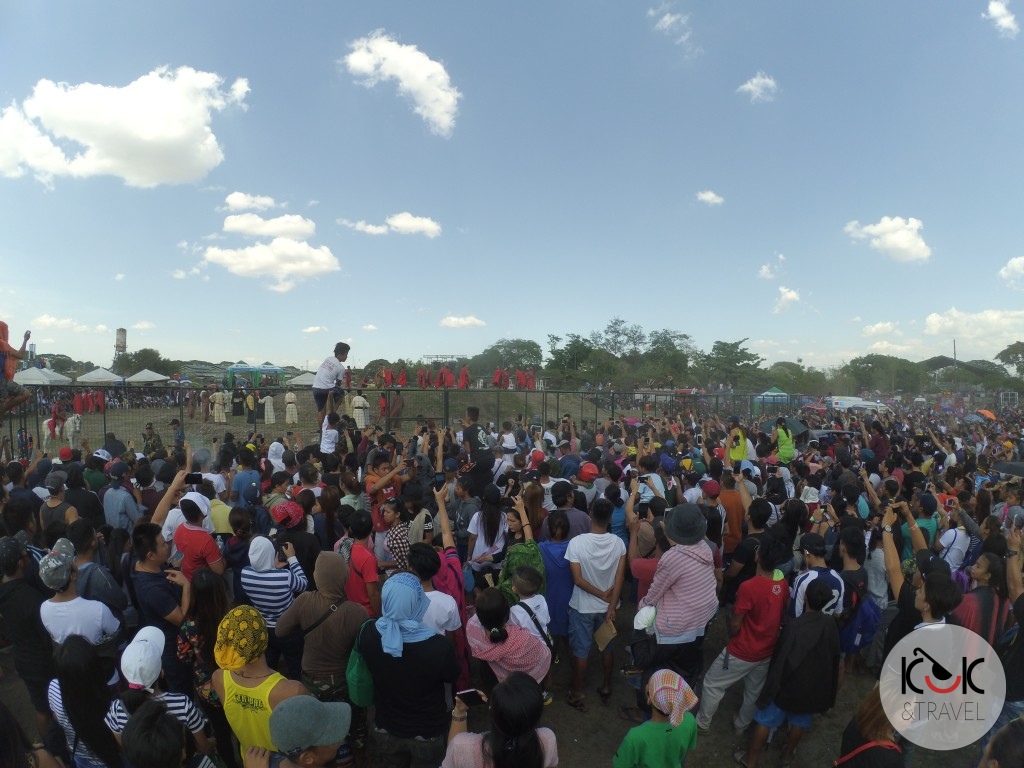
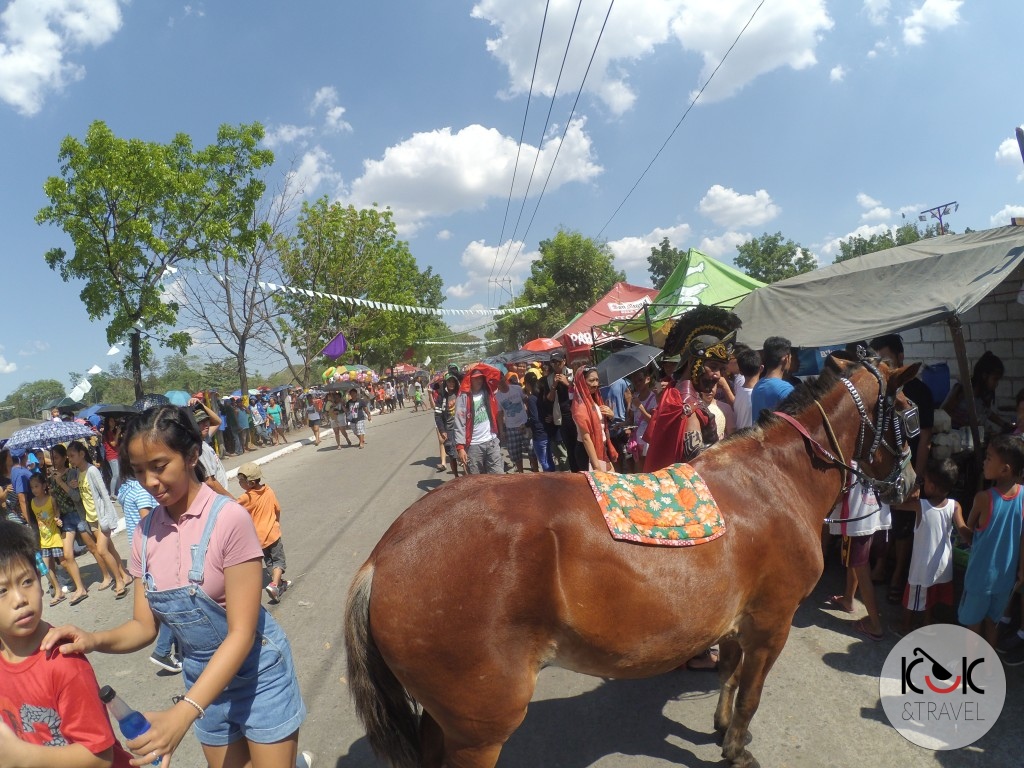
Good Friday is considered the bloodiest but also the most genuine and authentic day of the Easter Triduum for Filipinos.
As opposed to the experience on Good Friday, we had very pleasant memories of Holy Saturday. We stayed in Tagaytay (south of Manila) and went to church for an evening supper, Easter Vigil Mass at 9pm, which lasted about 3 hours! The mass was in Tanglish (there are some available in English though) but we enjoyed it as there was so much going on in the church on that evening. The mass itself began in the dark. The church was lit inside by candles carried by the believers. After some time, the fire of the candles was put out, the lights in the church were switched on, and then during the Mass, which was one of the most psalm- and song-packed masses that we had attended in our lives with the believers holding hands and smiling while participating in the ceremony, we had the opportunity to observe the sacrament of baptism exercsised on 10 adults and 4 infants 🙂 The priest first dipped the paschal candle in a large ‘container’ filled with water and then asked the adults who were to be baptized to come closer.

He pronounced their baptized names, they bowed their heads and had them poured with water. Then there was the most spectacular moment of baptizing small children! The kids were literally immersed from heads to toes in the water container, each one had to dive 3 times! The whole scene was accompanied by cheers of joy, applause and mass of pictures taken by the people gathered inside the church:)
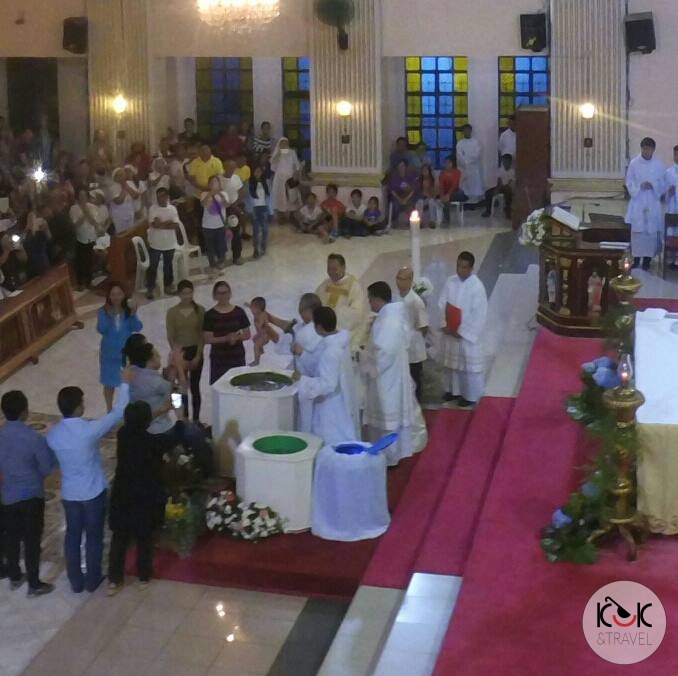
After the baptism the candles of the believers were relit. Then the priest passed with a bowl with blessed water throughout the church and was giving his blessing to everyone. The rest of the mass ceremony did not differ from the standard Polish mass. On Easter Sunday, starting from the early morning finishing in the late evening, typical Easter masses were taking place in the honour of Jesus, the Savour.
What caused a great surprise for us during Easter 2017 in the Philippines?
We expected the Filipinos to celebrate this most important religious feast with families, praying and having in mind that “the holy day should be celebrated”, we expected closed shops and businesses and that it would be a a peaceful time with empty streets and prevailing tranquility. In fact you couldn’t feel that it was Easter time. Despite the fact that some new Filipino friends told us that most citizens get 4 free days (starting from Good Thursday until Easter Sunday) and a great deal of shops and shopping malls were to be closed during this period, it did not really have much to do with reality. . Angeles, Manila and Tagaytay seemed to have a lively nightlife as if these were any other days of the year, and during that time a favorite form of spending the time by the locals was to go shopping and eat out in restaurants or fast food bars. The biggest shock was to us that small businesses such as: carpenter’s, hairdresser’s, beauty salon, spas were open all the time and of course were extremely busy; there was also no difference in bus or jeepney schedule – they seemed to circulate as usual. There was not even a problem with going on any excursion, for example on Taal Volcano tour even on Easter Sunday – business above all else! So after all this we don’t understand why such a common belief about the Filipinos’ genuine and deep religiosity and spirituality has been spread out all over the world..?








One Reply to “Bloody Good Friday in Angeles, the Philippines”